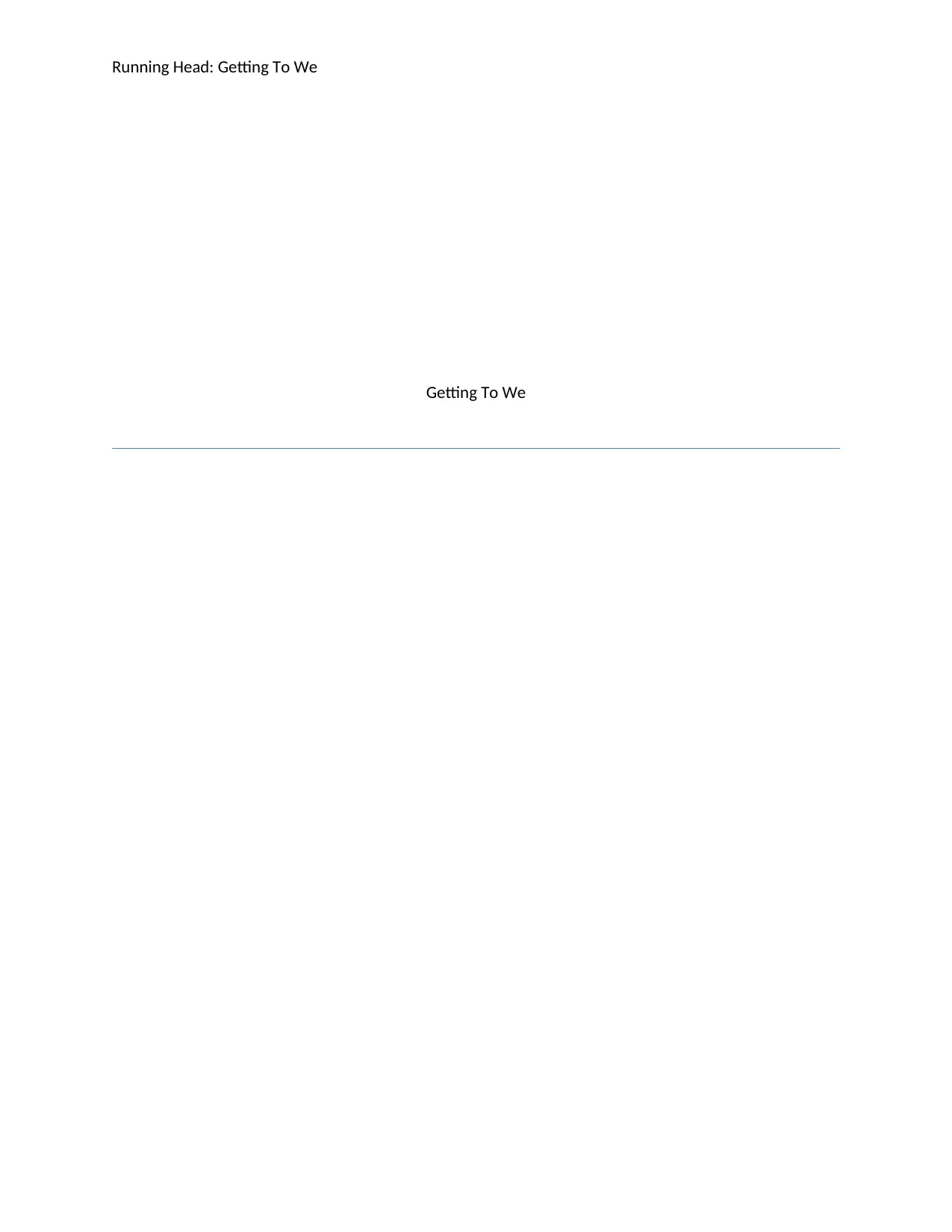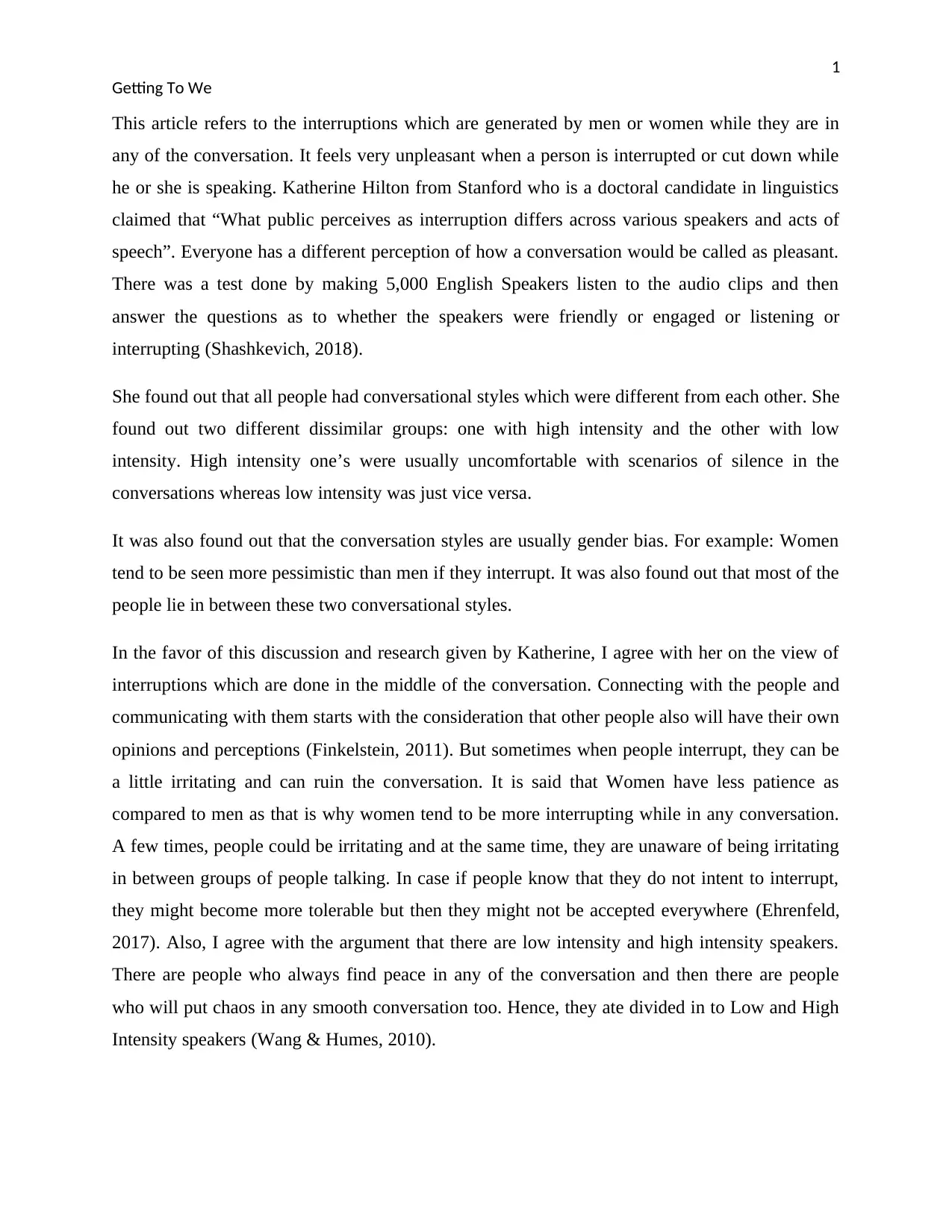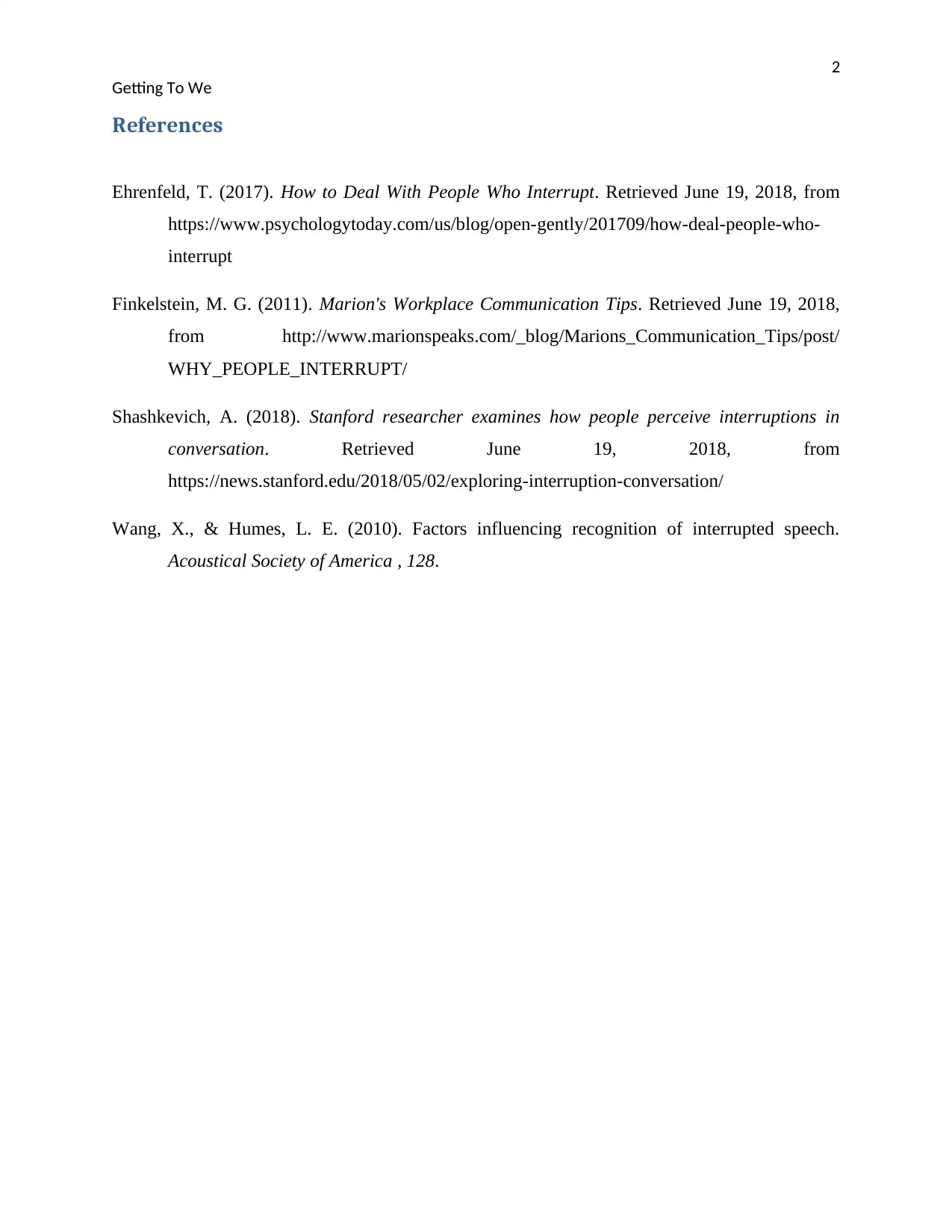An Essay on Perceptions and Interruptions in Conversations
VerifiedAdded on 2023/06/10
|3
|581
|151
Essay
AI Summary
This essay delves into the multifaceted nature of interruptions in conversations, drawing upon research by Katherine Hilton and others to explore how different individuals perceive and react to interruptions. It highlights the existence of varying conversational styles, categorized as high intensity and low intensity, and discusses how these styles influence one's comfort level with silence and interruptions. The essay also addresses the role of gender bias in the perception of interruptions, noting that women may be viewed more negatively than men when interrupting. The author agrees with the argument that individuals fall along a spectrum of conversational styles and acknowledges that interruptions can be both irritating and unintentional, emphasizing the importance of considering others' perspectives in communication. Desklib provides access to this and other solved assignments.
1 out of 3




![[object Object]](/_next/static/media/star-bottom.7253800d.svg)